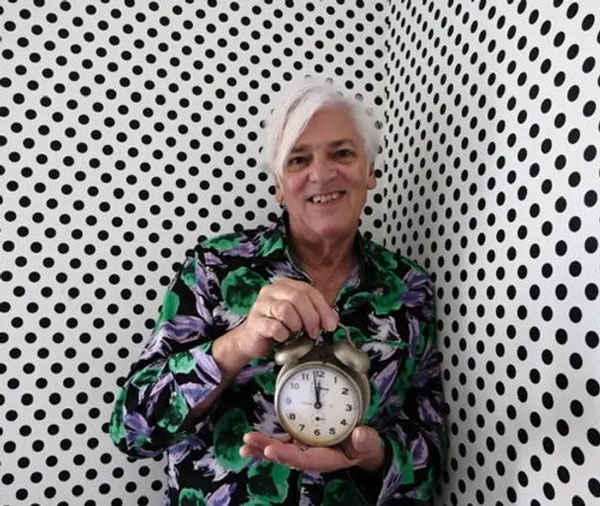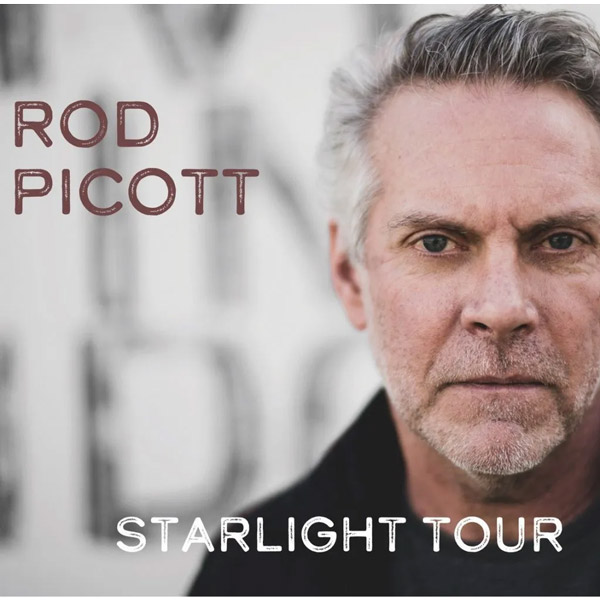By Spotlight Central, Photos by Love Imagery
originally published: 10/19/2016
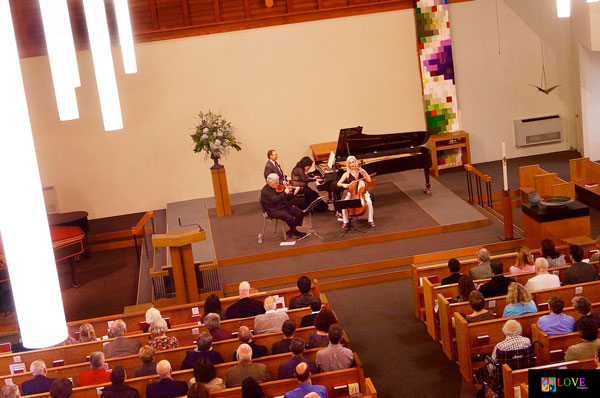
The sanctuary within St. John’s Church in Summit, NJ on Sunday, October 2, 2016 is set up with a stage containing a grand piano, two chairs, two benches, and two music stands.
And just to the right of the stage, a beautiful tapestry hangs.
Created for St. John’s 100th anniversary in 2008, the vibrant colors of the tapestry currently reflect the “ordinary” season, which began in the summer and which continues into the early fall of October.
But there is nothing “ordinary” about the concert experience which is to take place in this divine setting within the next few moments.
As explained by Ken Bryson, the man responsible for this — the third season of world-class concerts at St. John’s — the brilliant tapestry which ornaments this concert space was created by a group of volunteers from the church, using swatches of cloth donated by its members. Some of the pieces, explains Bryson, had personal significance for their donors, whereas others were chosen especially for their hue. All of them together, however, symbolize the sense of community and oneness of this very special place.
And currently filing in to this extraordinary setting is an audience of music lovers, here at St. John’s to listen to the music of a man who has been an inspiration to musicians and audiences alike for his entire adult life — Pinchas Zukerman.
Born in Tel Aviv, Zukerman came to America in 1962 where he studied at The Julliard School in NYC. Since then, he’s gone on to become one of the leading violinists of the second half of the twentieth century, not to mention a world-reknown conductor and an esteemed faculty member of the Manhattan School of Music. His extensive collection of recordings includes over 100 titles, earning him two Grammy awards and 21 Grammy nominations. He has also been awarded the National Medal of Arts, the highest award given to artists as presented by the President of the United States, and the Isaac Stern Award for Artistic Excellence, a National Arts Award, presented by Americans for the Arts.
Opening this afternoon’s performance with “7 pieces for violin and cello, Op. 39,” by Gliere, Zukerman, on violin, along with Amanda Forsyth, on cello, simply astonish the audience with their incredible virtuosic talent.
Forsyth, a Juno-award-winning instrumentalist, is a Canadian musician considered one of North America’s most dynamic cellists.
As the duo proceeds through the seven movements of the Gliere — “Prelude,” “Intermezzo,” “Gavotte,” “Berceuse,” “Impromptu,” “Canzonetta,” and “Scherzo” — Zukerman and Forsyth completely command each listener’s attention. Effortlessly sliding and gliding, these magicians make their instruments sing, the audience unable to distinguish where each instrument ends and each musician begins.
As they continue to play, the music shifts and changes colors and textures — for example, at one point, the drone of the violin captivates the audience as the cello’s melody floats above. But then, in an instant, the music changes from high and playful to mellow and dramatic — each movement of the piece connecting to the next, creating a magical and satisfying whole.
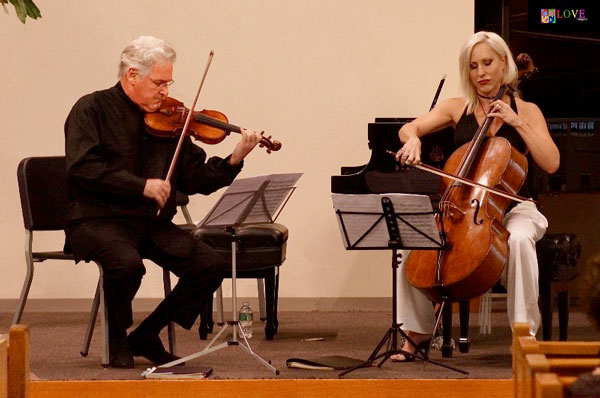
Following enthusiastic applause, Zukerman and Forsyth are joined on stage by pianist Angela Cheng. Also from Canada, Cheng is a performer who is consistently praised for her superb musicianship, thus finding herself in demand in North America as both a recitalist and an orchestral soloist.
As a member of the Zukerman Trio, however, Cheng — along with her collegues — has traveled the globe, performing in such countries as Japan, China, Australia, Spain, Italy, France, Hungary, South Africa, and Russia, in addition to the United States. In this season alone — the sixth since the founding of the group in 2011 — the Trio has already given performances in such diverse places as Oslo, Los Angeles, Sonoma, and Sanibel, before traveling here to perform in Summit, NJ.
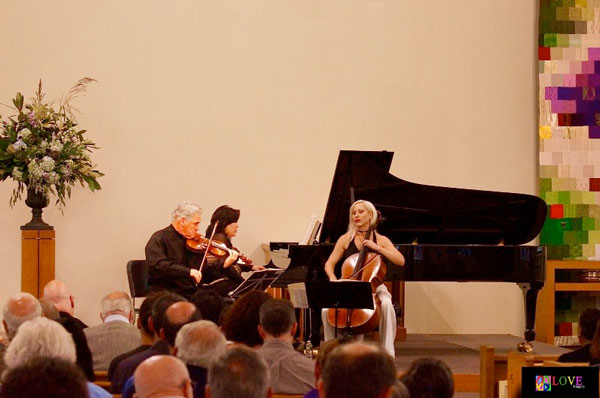
For their first Trio selection, Zukerman, Forsyth, and Cheng play the “Piano Trio №2 in E minor, Op. 67,” by Shostakovich.
As they perform, the natural sounds of their instruments are beautifully amplified by the room, which provides the musicians with the power necessary to forcefully communicate even the most fortissimo passages of the Shostakovich, yet at the same time, to gently play even the piece’s most pianissimo segments.
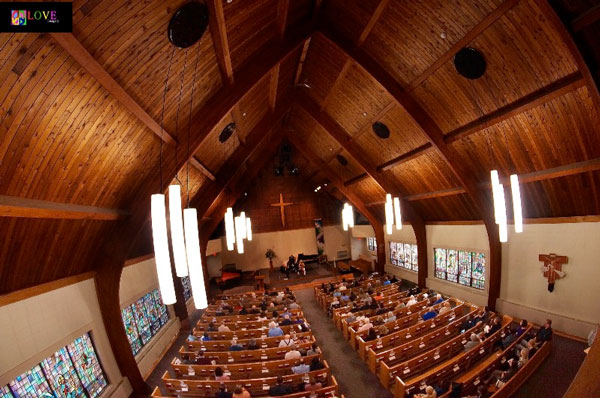
As the Trio plays through the four movements of the Shostakovich — “Andante-Moderato,” “Allegro non troppo,” “Largo,” and “Allegretto” — they are joined on stage by Henry Ahlers, a church member who volunteered to come up from out of the audience and turn pages for pianist Angela Cheng.
Ahlers, a pianist himself, revealed after the performance that he had no idea he was going to be turning pages for this piece of music, saying, “The music was so complex, at times it was difficult to know if the pianist was motioning for me to turn the page or if she was communicating with the string players!”
This challenge aside, Ahlers also hinted at the joy this task can bring, disclosing, “You are being enveloped in the music.” At the same time, however, he acknowledged his goal of remaining in the background while on stage, revealing, “This is a small intimate venue, so you have to understand that intimacy.”
Symbolizing the great sense of community at St. John’s, Ahlers’ volunteer activity is appreciated by the audience as the Trio flawlessly performs, leaving Ahlers to conclude about his experience in the limelight, “It’s great to think everyone is getting something out of this gift of music.”
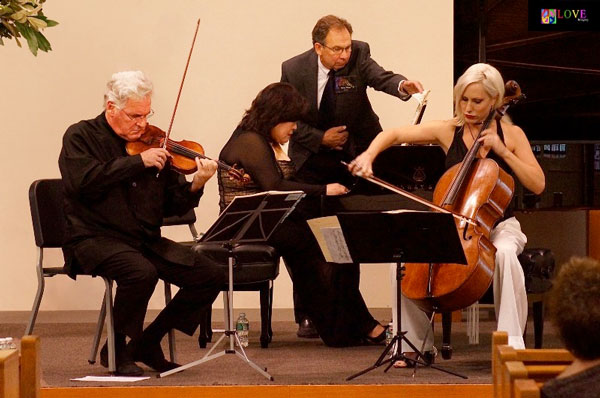
And what music it is!
The Shostakovich is simply majestic — the intensity beautifully amplified by the magnificent room and its wonderful acoustics — a round warm collaborative sound filling up this sacred and glorious space.
As they play through the various movements of this very complex piece, one can appreciate, for example, Forsyth as she plays her cello high on the fingerboard, her muscles rippling as she coaxes her instrument to produce sounds which, at times, border on the stratospheric and ethereal.
And with Cheng’s piano supporting him below with its rumbling tones, Trio leader Pinchas Zukerman’s violin simply sings along up top, floating out over the audience, its vibrations reaching every listener’s ear, mind, and heart.
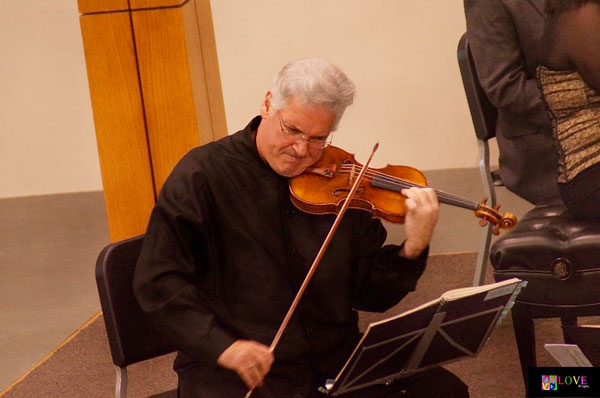
As the staccato bouncing of bows of Zukerman’s violin and Forsyth’s cello echo the piano part, all three instruments bounce right into their own unique melodies, all building as they move through space and time together.
Further, as they continue, one can see Cheng on the piano alternately watching her sheet music and, then, her two partners on stringed instruments as she and her colleagues ultimately become one with the music.
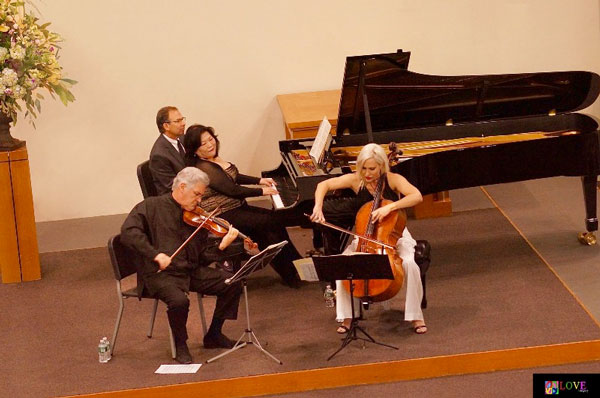
As the piece advances, these virtuosos expertly execute command of their respective instruments while, at the same time, pouring their souls into the music, magically making three instruments disappear into one.
And in doing so, they transport their listeners to places they’ve never been, allowing each audience member to breathe in the group’s masterful sound. Moreover, as the sound changes moment to moment — from happy to sad, peaceful to frenetic, joyful to sorrowful, harmonic to dissonant — members of the audience can be seen weeping real tears filled with feeling, light, and breath.
The Trio triumphantly concludes the “Trio” and is met with wild applause for these three master musicians.
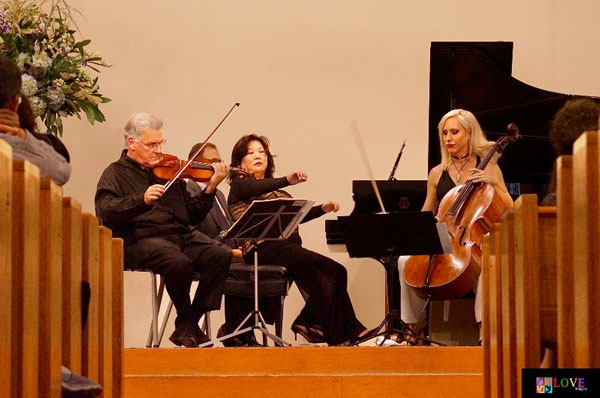
Following intermission, Zukerman, Forsyth, and Cheng return to the St. John’s sanctuary to perform the “Piano Trio in B-flat major, D. 898” by Franz Schubert.
In this piece’s four movements — “Allegro moderato,” “Andante un poco mosso,” “Scherzo. Allegro — Trio,” and “Rondo. Allegro vivace” — the audience is again treated to the rhythmic bouncing of bows on strings and hands on keys.
Fingers fly over catgut and ivory, setting strings both seen and unseen into vibrations of glorious motion and sound.
The music of Schubert fills the entire room with wonder whether each instrument is playing its own part or all three musicians are playing together as one.
When a listener hears a classical instrumental recording, he or she simply does not see the sweat and the dance of instruments as they are played. As this piece continues, however, the lucky audience at St. John’s can clearly see the joy that fills the expressive face of Cheng on the piano as she interprets the notes on the printed page. It’s almost as if the music comes straight through the keys to inform and illuminate her face.
They can also see the master — Trio leader Pinchas Zukerman — his body moving with the music, swaying to and fro, giving life to magical sounds which, for over a half century now, have taken music lovers to a new dimension.
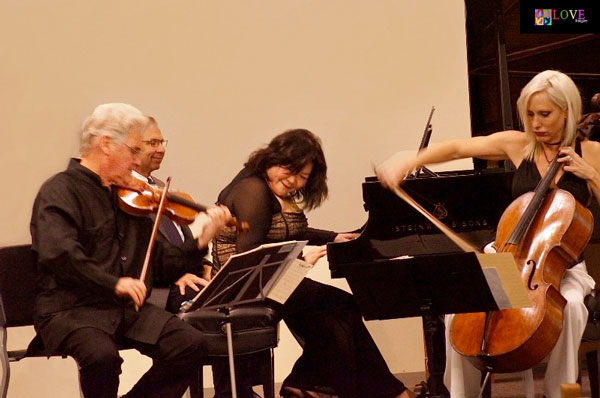
After yet another simply triumphant performance, the audience responds with exuberant applause, each listener joyfully showing his or her appreciation for the sheer talent of these extraordinary musicians.
Following the concert, we’re given an opportunity to meet with Mr. Zukerman and ask him about his feelings regarding performing here in the Garden State.
“Playing in New Jersey is like performing anywhere,” replies Zukerman, smiling. “It’s the music — you play it as well as you know it.”
Then Zukerman goes on add, “Like I tell my students, ‘Whether you’re in Berlin or Oklahoma — anywhere you play, as soon as you open your case, you do your best.”
“And if a student ever says, ‘I don’t feel like playing,’” continues Zukerman, “I just tell him, ‘then you’re out of the parade.’”
True to form, then — not only in the parade, but leading the parade here today at St. John’s — is Pinchas Zukerman, along with Amanda Forsyth and Angela Cheng. And marching right beside them are the members of the St. John’s community who organized and supported this magnificent musical achievement.
But what about the audience? How did they feel about it?
When asked for an opinion of this world-class performance right here in the heart of the Garden State, one audience member summed up the feelings of many with a single word:
“Perfection.”
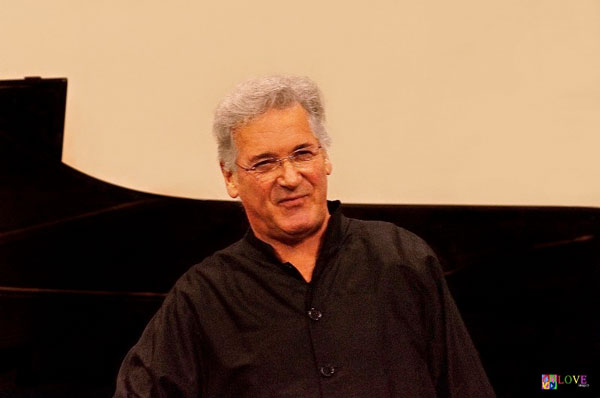
For more on upcoming NJ concerts by Pinchas Zukerman — including appearances with The New Jersey Symphony Orchestra at NJPAC in Newark on Jan. 13, 2017; at The Count Basie Theater in Red Bank on Jan. 14, 2017; and at The State Theater in New Brunswick on Jan 15, 2017 — please go to kirshbaumassociates.com. For more information on upcoming performances at St. John’s Lutheran Church in Summit, NJ — including 17-year-old concert pianist Wei Luo on Nov. 5, 2016; The West Point Glee Club on Feb. 12, 2017; and the Emmet Cohen Trio on Jun. 3, 2017 — please go to www.stjohnssummit.org/concertseries.
Photos by Love ImagerySpotlight Central. Your source for Jersey entertainment news and reviews
Love Imagery Fine Art Photography. all you need. peace/love/flower/power
FEATURED EVENTS
Narrow results by date, categories, or region of New Jersey.

Trombone Shorty & Orleans Avenue
Thursday, November 21, 2024 @ 7:30pm
State Theatre New Jersey
15 Livingston Avenue, New Brunswick, NJ 08901
category: music
View event page for full information

Randall Goosby Returns: Renaissance Quartet
Thursday, November 21, 2024 @ 7:30pm
McCarter Theatre Center (Matthews Theater)
91 University Place, Princeton, NJ 08540
category: music
View event page for full information

Marshall Crenshaw - Up Close & Personal
Thursday, November 21, 2024 @ 7:30pm
Lizzie Rose Music Room
217 E. Main Street, Tuckerton, NJ 08087
category: music
View event page for full information
More events
Event Listings are available for $10 and included with our banner ad packages
EVENT PREVIEWS

Renaissance Quartet Brings Bold Innovation and Classical Mastery to McCarter Theatre on Thursday
(PRINCETON, NJ) -- Prepare to be captivated by the Renaissance Quartet, featuring violinists Randall Goosby and Jeremiah Blacklow, violist Jameel Martin, and cellist Daniel Hass. Graduates of the Juilliard School and mentored by the legendary Itzhak Perlman, the Quartet brings a unique blend of classical mastery and innovative flair to McCarter Theatre on Thursday, November 21, 2024 at 7:30pm. Known for reimagining chamber music traditions, this New York based ensemble combines technical excellence with a bold, forward-thinking approach that appeals to a diverse audience.
UPCOMING EVENTS

Rod Wave - Last Lap Tour comes to Prudential Center in December
(NEWARK, NJ) -- This Fall, AG Touring and Mammoth, Inc. proudly present the Rod Wave - Last Lap Tour. This large-scale multi-city outing will feature Rod Wave headlining 36 of North America's top arenas coast-to-coast. The tour will kick off on October 19 at Desert Diamond Arena in Phoenix, AZ visiting major markets across the country, including Newark’s Prudential Center on Tuesday, December 3, 2024 with special guests Moneybagg Yo, Toosii, Lil Poppa, Dess Dior and Eelmatic.


















